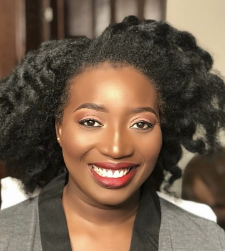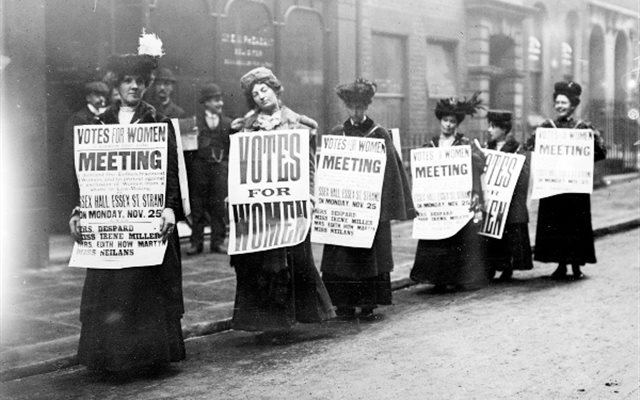 This post was contributed by Lynne Segal, Anniversary Professor of Psychology & Gender Studies in the Department of Psychosocial Studies. This post was originally published by Feminist Times.
This post was contributed by Lynne Segal, Anniversary Professor of Psychology & Gender Studies in the Department of Psychosocial Studies. This post was originally published by Feminist Times.
Writing an obituary for ‘post-feminism’ is difficult. I never loved, nor even accepted, the creature in the first place. In its different dis/guises, from Girl Power to Tory feminism, it was always a slippery, shape-shifting thing. In life, Mark Twain was declared dead twice over, quipping the first time that his death was exaggerated. In its ongoing life, feminism has been declared dead many times over, keeping its eager obituary writers always busy. Post-feminism should be easier to bury, though perhaps harder to keep safely interred.
Over sixty years ago, commencing the iconic text of second-wave feminism, Simone de Beauvoir apologized for reviving a topic that was perhaps dead: ‘Enough ink has been spilled in quarrelling over feminism, and perhaps we should say no more about it’. Within days, the ink she spilled sold 22,000 copies and The Second Sex has kept selling ever since. Twenty years later, second-wave feminism could hardly have emerged with more clamour, quickly spreading the message that women’s collective efforts would change the world. ‘Goodbye to All That’, Robyn Morgan declared in 1968, when a group of young women occupied the offices of a radical left publication in New York, joined together to protest the Miss America pageant and founded the radical feminist group W.I.T.C.H. That same year, her fellow American poet Adrienne Rich was similarly celebrating the awesome collectivity of women: ‘A woman in the shape of a monster/ a monster in the shape of a woman/ the skies are full of them’.
No wonder its critics waited impatiently to bury this new force, which did indeed usher in a decade of dramatic legislative, social and cultural change. Wherever it grew, it opened doors previously closed to women. It gave women more control than ever before over our bodies and sexuality, made us – when united – more assertive in the home, the workplace and the world at large, everywhere stressing women’s disadvantage and discrimination, including the frequency of men’s violence against and sexual abuse of women and girls. It was the successful spread of feminism that itself heightened recognition of and conflicts over the divisions between women, with newly emerging voices proclaiming their distinct forms of cultural and economic disadvantage and disparagement.
Finally, the era that would be labeled ‘post-feminism’ kicked off in the 1990s, after economic crises had brought the Right into power in Britain, the USA and beyond: rolling back welfare, attacking unions and other sites of resistance, increasing workplace insecurity, above all, ubiquitously popularizing notions of ‘free choice’ as beneficial for all; collectivity as tedious and constraining when not serving market forces. The speedy rise and fall of the Spice Girls in the late 1990s epitomized this putative ‘postfeminism’. Directly produced by the record-industry, these self-proclaimed ‘feminists’ crystallized the essence of ‘girl-power’, as their ostentatious quest for individual success and their return to conventional ‘feminine’ wiles dominated the airwaves: ‘Wannabe’; ‘Spice Up Your Life’; ‘Never Give Up on the Good Times’.
This lavishly layable Lady– ‘Get Down with Me’; ‘Let Love the Lead the Way’– suggested one form of female-empowerment (however fleeting); Margaret Thatcher personified another. Out the window went gritty resistance to the increasing disruptions and strains caused by shifting gender relations in a world in which, symbolically, and for the most part materially, men still held sway over women. At the very same time, the immense appeal of Bridget Jones Diary, depicting one woman’s search for her man, or the equally popular Carrie Bradshaw, busily recording the affluent, home-buying, successful lives of four female friends dining out in New York in the stylish sit-com Sex and the City, were instances of the same phenomena. Never mind the familiar sexual hazards facing adolescent girls, the resentful failures and uncertainties of many boys and men, the overwork of countless married women, the impoverishment of lone mothers and their children, the heightening global inequalities – these ‘new’ women (real and imagined) had financial independence, sexual freedom, immense consumer choice, while pursuing the affluent men of their dreams.
Some feminist writers, especially those prominent in the media, including Naomi Wolf and Natasha Walter, at first applauded what they saw as a new form of ‘power feminism’, hoping that some women’s growing professional success would increase their ability to empower others. Yet, both were aware of the multiple problems most women still faced, as Walter called for more change to enable all women to find a place ‘in the corridors of power’. Meanwhile, older feminists, myself included, mostly rejected both this ‘new feminism’, while criticizing the very idea of ‘post-feminism’.
Times change, and militant feminism is once more on the move. Young women especially are taking to the streets, writing blogs, organizing conferences, stressing above all the collective power of women, not just to change themselves and enter the corridors of power, but to beat back violence in all its forms, asserting the value of caring and interdependence in pursuit of social transformation. Deploying new forms of communication, activism and aesthetic expression, feminist horizons broaden and deepen. They encompass the economics of globalization, as some women are shuttled around the world to survive, but also include the future of the planet itself, even while attending closely to the immensely differing, often contradictory, details of women’s lives near and far.
As I bury post-feminism, and the absurdity of imagining that any feminism worthy of the name could begin simply from notions of individual ‘free-choice’, self-assertion or glamour (much as we may delight in these things), I am deepening the hole I have been frantically digging for over forty years. Goodbye post-feminism; hello feminism.
Lynne Segal is a feminist writer and activist, and Anniversary Professor of Psychology & Gender Studies at Birkbeck. Her forthcoming book Out Of Time: The Pleasures and Perils of Ageing is published by Verso on 7 September.










